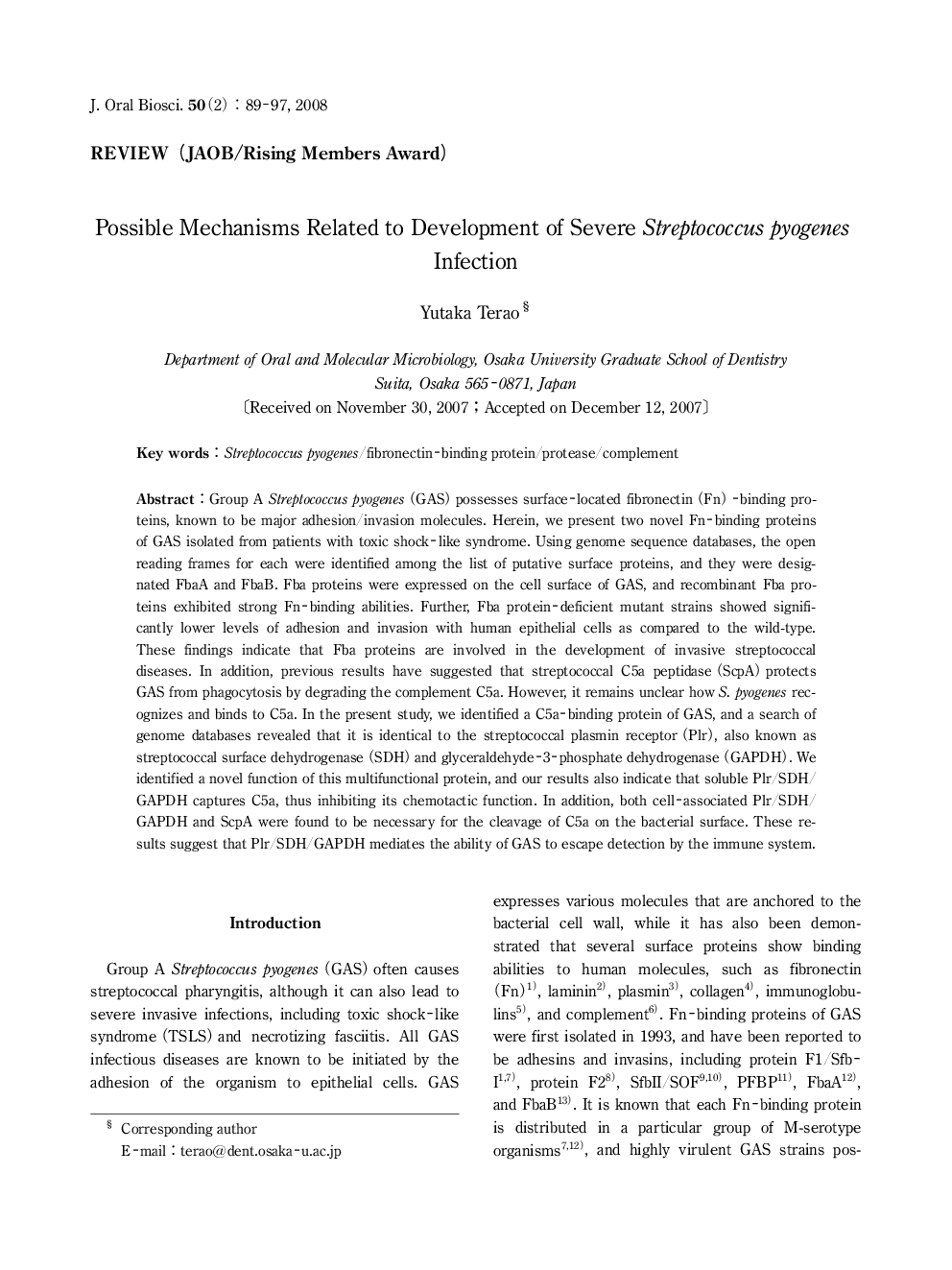| Article ID | Journal | Published Year | Pages | File Type |
|---|---|---|---|---|
| 2777057 | Journal of Oral Biosciences | 2008 | 9 Pages |
Group A Streptococcus pyogenes (GAS) possesses surface-located fibronectin (Fn) -binding proteins, known to be major adhesion/invasion molecules. Herein, we present two novel Fn-binding proteins of GAS isolated from patients with toxic shock-like syndrome. Using genome sequence databases, the open reading frames for each were identified among the list of putative surface proteins, and they were designated FbaA and FbaB. Fba proteins were expressed on the cell surface of GAS, and recombinant Fba proteins exhibited strong Fn-binding abilities. Further, Fba protein-deficient mutant strains showed significantly lower levels of adhesion and invasion with human epithelial cells as compared to the wild-type. These findings indicate that Fba proteins are involved in the development of invasive streptococcal diseases. In addition, previous results have suggested that streptococcal C5a peptidase (ScpA) protects GAS from phagocytosis by degrading the complement C5a. However, it remains unclear how S. pyogenes recognizes and binds to C5a. In the present study, we identified a C5a-binding protein of GAS, and a search of genome databases revealed that it is identical to the streptococcal plasmin receptor (Plr), also known as streptococcal surface dehydrogenase (SDH) and glyceraldehyde-3-phosphate dehydrogenase (GAPDH). We identified a novel function of this multifunctional protein, and our results also indicate that soluble Plr/SDH/GAPDH captures C5a, thus inhibiting its chemotactic function. In addition, both cell-associated Plr/SDH/GAPDH and ScpA were found to be necessary for the cleavage of C5a on the bacterial surface. These results suggest that Plr/SDH/GAPDH mediates the ability of GAS to escape detection by the immune system.
